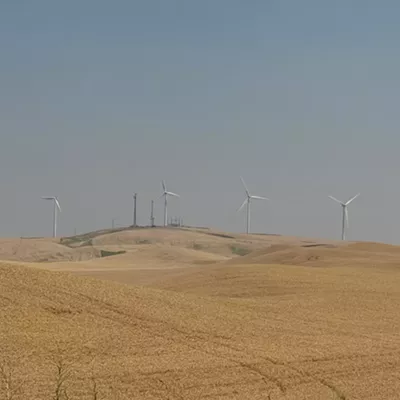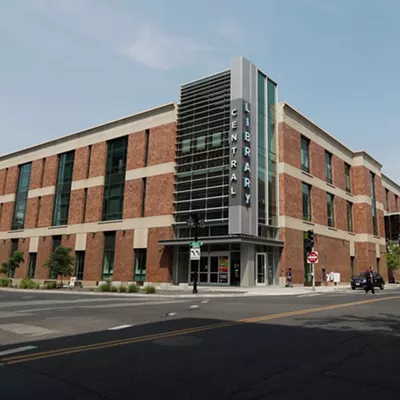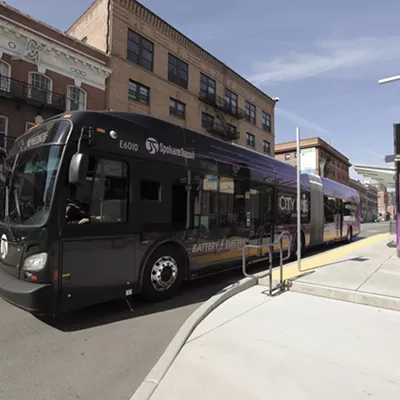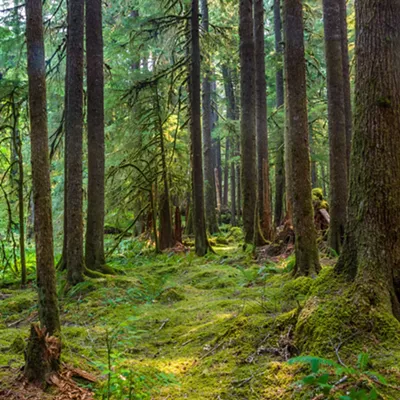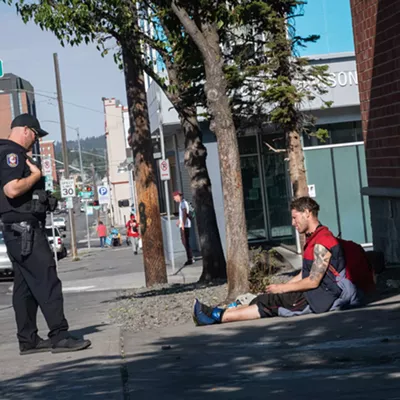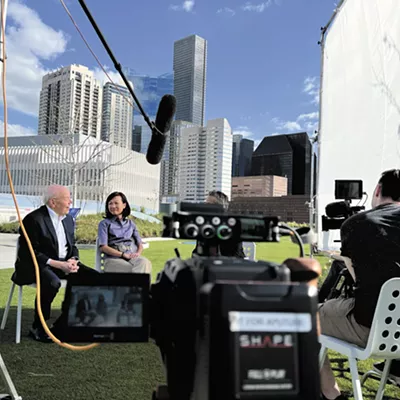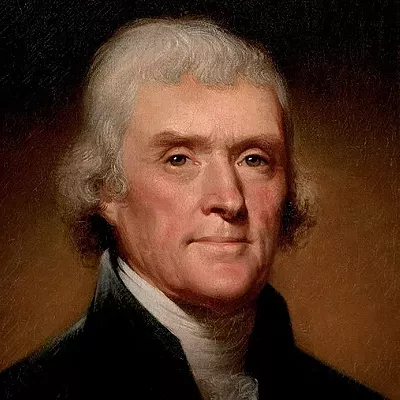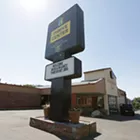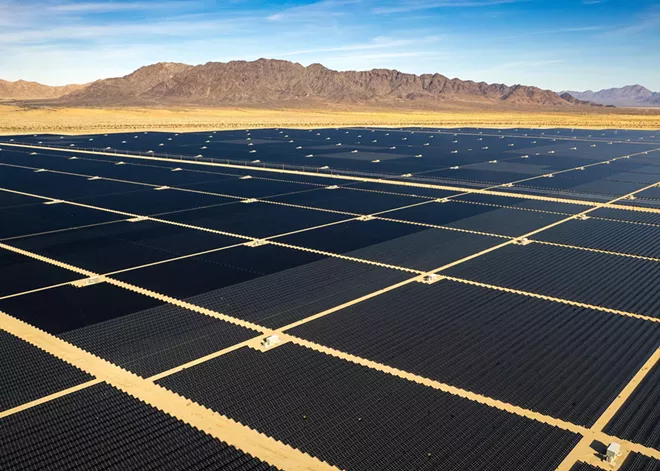
In November, at a meeting of Western governors in Jackson, Wyoming, Interior Secretary Deb Haaland announced the advancement of 15 clean energy projects on Western public lands. At the top of the list were the Oberon and Arlington projects in Southern California, two massive solar-plus-storage facilities with a combined generation capacity of 864 megawatts — enough to power more than 250,000 homes — that are fully operational. Other solar, transmission and geothermal projects in various phases of development are also moving forward.
It was a nugget of good news for climate hawks, who see an intensive buildup of low-carbon electricity generation as the only way to avert climate calamity. At the same time, the Biden administration's willingness to offer up public lands for the cause understandably worries desert advocates and tribal nations who cherish those same lands.
That the planet is heating up is undeniable. After the hottest summer on record, September was so warm globally that one climate scientist described it as "absolutely gobsmackingly bananas." If the science doesn't move you, then consider what Westerners have experienced in recent months, from melting glaciers in Montana and catastrophic flooding in parts of California, to all-time-high temperatures in New Mexico and Arizona. Extreme heat killed nearly 600 people last year in Maricopa County, Arizona, a new record and a 36% increase from the previous year. And the heat and resulting dust and wildfire smoke in the air will take an even larger toll in the long term, especially on outdoor workers and underserved communities.
And yet the world's nations are dillydallying. The title of the United Nations' annual report on greenhouse gas emissions says it all: Broken Record: Temperatures hit new highs, yet world fails to cut emissions (again). The report finds that worldwide emissions, which continue to increase, need to be slashed by more than 40% by 2030. While the U.S. has incrementally cut emissions over the last decade, it hasn't done so rapidly enough, and Americans — particularly the wealthiest 1% — are still emitting far more per capita than just about anyone.
It's abundantly clear that society must stop burning fossil fuels, and soon. Electrifying our cars and industrial boilers and home heating systems is a start, but it won't amount to much as long as our power grid persists in relying on natural gas and coal. Decarbonizing the grid will require not only replacing fossil fuels with clean energy sources, but also building new transmission lines to deliver that power, as well as enough energy storage to provide electricity once the sun goes down or the wind stops blowing.
This energy evolution must include distributed generation: solar panels and battery packs at homes, on big-box stores and over parking lots. But it cannot succeed without the kind of utility-scale clean energy installations only well-financed companies can construct quickly enough. Such industrial-sized facilities require lots of space, capital and material, though, and some of them, inevitably, will end up being built on public lands. Which brings us back to the projects being pushed by the Biden administration.
Many of them are already facing, or are likely to face, considerable pushback, mostly for legitimate reasons — because they will harm wildlife, landscapes or cultural sites. The Oberon solar facility in Southern California, for example, destroyed habitat used by imperiled desert tortoises and plenty of other critters. The developer also had to suck up copious quantities of precious groundwater in an arid environment for dust control during construction. The geothermal projects, if approved, could deplete aquifers and the springs and the wildlife that depend on them.
But if the energy projects are necessary, the amount of damage they do is not. Given the vast expanse of the public lands, there are bound to be places that are appropriate for development, as well as many others that are not. It's up to the land-management agencies and the developers to find the best locations and figure out ways to at least minimize possible damage to lands and wildlife and cultural sites. The first step is obvious: Project developers need to engage local stakeholders well before any plans are drawn up or proposals are made.
This seems like a no-brainer, yet in most cases the developer comes up with a plan that never receives public input until it's too late to either alter it or kill it altogether. Take the SunZia transmission project in southern Arizona. The Bureau of Land Management gave the developers permission to build it through the San Pedro River Valley despite the objections of local Indigenous nations. After the bulldozers broke ground, the Tohono O'odham Nation, the San Carlos Apache Tribe, and Archaeology Southwest formally challenged the project's approval, citing its potential harm to cultural sites. The BLM temporarily halted construction on a 50-mile segment of the line to allow the agency to further consult with the tribes. If major changes to the line follow, it will surely cost more than if that consultation had taken place before construction began and if any necessary changes had been made at the start.
It seems obvious that developers should be kept away from the most sensitive landscapes to begin with, either through heightened environmental protections or by protecting the land by designating national monuments. Instead, projects should be built in previously disturbed areas, such as reclaimed coal mines or oil and gas fields. Federal agencies could also encourage new transmission lines along existing utility or transportation corridors by streamlining permitting in those areas — something the Biden administration has already proposed.
Finally, those who oppose utility-scale development on public lands should be doing all they can to shift that development onto rooftops, parking lots and so-called "brownfields" — already damaged landscapes, such as abandoned industrial sites. This means fighting the efforts of regulators and utilities to slash incentives for rooftop solar. It means combating kneejerk opposition to clean energy installation on private lands because it might end up disturbing the view, lowering property values or taking land out of agricultural use. The residents of Ophir, Colorado, for example, recently voted against a proposed study of a solar-powered microgrid that would have allowed them to keep the lights on even if an avalanche took out the power lines. Why? Because the small solar array would have impinged on the town's open space — this in a town surrounded by public lands that would have remained untouched.
The world is in a serious quandary, one that is especially challenging for those of us who value public lands but also realize that we're in the midst of an existentially threatening climate crisis. The task will be monumental — and at times heart-rending — and it will be hard to see acres of solar panels and forests of wind turbines sprouting from landscapes we love. But the situation is not hopeless. We have clear choices about how and where we construct the clean energy projects we need. The only option we don't have is to do nothing. ♦
Jonathan Thompson is a contributing editor at High Country News, where this first appeared. He is the author of Sagebrush Empire: How a Remote Utah County Became the Battlefront of American Public Lands.



